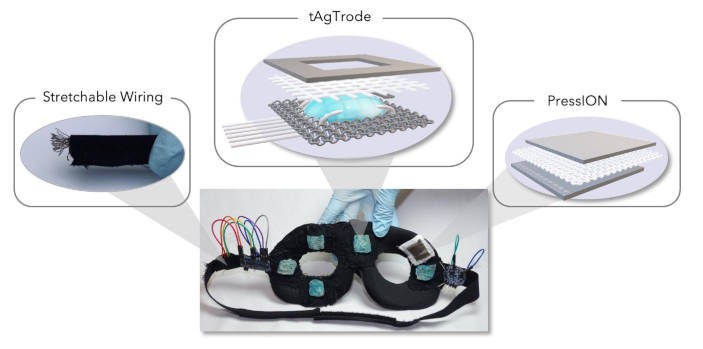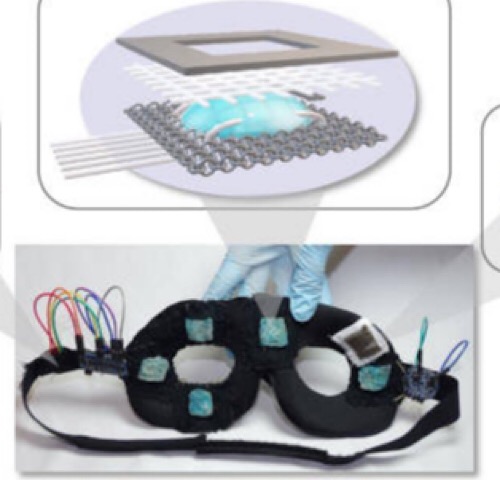Re-usable flexible medical skin electrodes have been built by combining fabric and chemical engineering at the University of Massachusetts Amherst.
Technical performance is similar to commercial wet gel electrodes, while convenience is comparable to dry electrodes – which are easy to use but generally provide inferior signals to wet electrodes.

Four of the electrodes have been built into a mask, and compatible electronics created to allow eye tracking from voltages measured close to face muscles.
To allow the mask to measure the wearers pulse, a second type of fabric sensor was created that responds to pressure variations in the supraorbital artery.
“Up to now, integrating many different sensing elements in one garment seemed burdensome, especially when it comes to small eye masks,” added fellow researcher computer scientist Deepak Ganesan.
The voltage electrodes start life as an array of silver threads embroidered into the top of hydrophobic cotton cloth, with the surface of silver converted to silver chloride to form an ionic interface for bio potential signals.
Using ‘initiative’ chemical vapour deposition, a silver-containing salt-infused hydrogel is deposited onto the fabric and silver threads.
This soft hydrogel performs multiple functions: It is needed to translate ion-based biological signals into an electric current, it reduces motion artifacts – for example stray signals from eating – and it reduces noise from stray electromagnetic fields. It does all of this without needing additional adhesives.
The hydrogel is simply hydrated for use, and has been tested 40 hydration-dehdration cycles, and works for over a year, with no degradation in performance.
To prevent abrasion of the sensor, over the silver thread and hydrogel combination is stitched an open-weave cotton gauze, followed by a frame of hydrophobic cotton to define the sensing area.
Output from the electrodes is in the order of 10μV, for which a custom amplifier and filter were created to provide a suitable signal for a low-power ADC.
The pressure sensor consists of two sheets of silver-coated nylon sandwiching an cotton inter-layer treated to be conductive. Any squashing force applied over the sensor results in an impedance decrease between the silver-coated sheets.
Connections between sensors and electronics are through hydrophobic silver threads inside cotton piping, and a Bluetooth transceiver communicates measurements to a remote computer for processing.
The sensors do not loose signal integrity, even when worn for eight hours and, with electronics removed, the mask’s sensors were still functioning after 15 trips through a washing machine.
As well as medical uses, devices built on these sensing principles could be used in gaming and virtual reality headsets, according to the university.
The work was presented at the Fall Meeting of the American Chemical Society, and is described in the paper ‘Multimodal Smart Eyewear for Longitudinal Eye Movement Tracking‘ published in Matter. This is a clearly written and easily understood paper, available in full without payment.
source: electronicweekly










